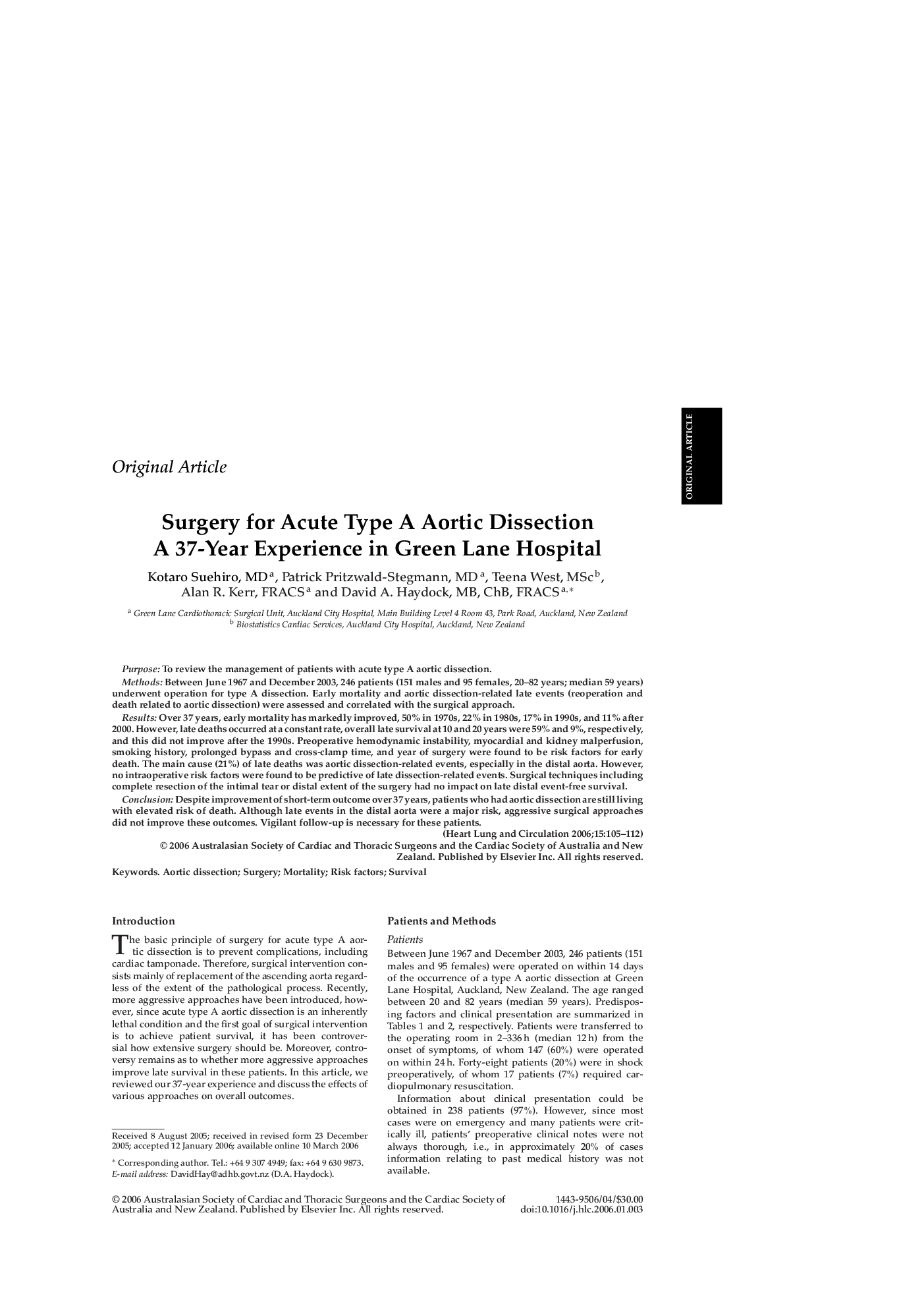| Article ID | Journal | Published Year | Pages | File Type |
|---|---|---|---|---|
| 2920584 | Heart, Lung and Circulation | 2006 | 8 Pages |
PurposeTo review the management of patients with acute type A aortic dissection.MethodsBetween June 1967 and December 2003, 246 patients (151 males and 95 females, 20–82 years; median 59 years) underwent operation for type A dissection. Early mortality and aortic dissection-related late events (reoperation and death related to aortic dissection) were assessed and correlated with the surgical approach.ResultsOver 37 years, early mortality has markedly improved, 50% in 1970s, 22% in 1980s, 17% in 1990s, and 11% after 2000. However, late deaths occurred at a constant rate, overall late survival at 10 and 20 years were 59% and 9%, respectively, and this did not improve after the 1990s. Preoperative hemodynamic instability, myocardial and kidney malperfusion, smoking history, prolonged bypass and cross-clamp time, and year of surgery were found to be risk factors for early death. The main cause (21%) of late deaths was aortic dissection-related events, especially in the distal aorta. However, no intraoperative risk factors were found to be predictive of late dissection-related events. Surgical techniques including complete resection of the intimal tear or distal extent of the surgery had no impact on late distal event-free survival.ConclusionDespite improvement of short-term outcome over 37 years, patients who had aortic dissection are still living with elevated risk of death. Although late events in the distal aorta were a major risk, aggressive surgical approaches did not improve these outcomes. Vigilant follow-up is necessary for these patients.
